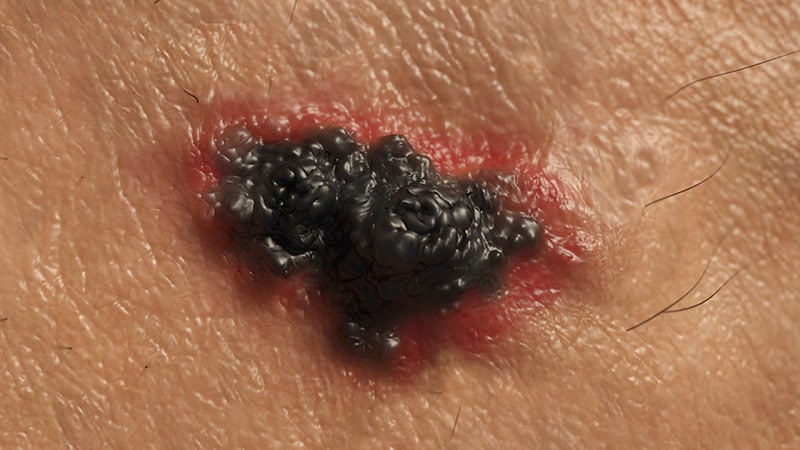New NCCN Melanoma Guidelines 2024: Updates and Recommendations
Core Concepts
NCCN's 2024 guidelines for cutaneous melanoma reflect incremental advances and expert consensus, emphasizing the importance of frequent updates and evolving evidence.
Abstract
The National Comprehensive Cancer Network (NCCN) has released new guidelines for cutaneous melanoma, diverging from the American Academy of Dermatology (AAD) recommendations. Dr. Susan Swetter, a key figure in developing both sets of guidelines, highlights the importance of evolving science in shaping best practices. The 2024 NCCN guidelines emphasize incremental advances, such as changes in biopsy procedures and surgical margins, to improve diagnostic accuracy and outcomes. These guidelines, based on expert consensus, aim to provide updated and evidence-based recommendations for managing cutaneous melanoma.
Key Highlights:
NCCN guidelines reflect incremental advances and evolving evidence.
Differences between NCCN and AAD recommendations stem from evolving science.
Emphasis on frequent updates and expert consensus in guideline development.
Changes in biopsy procedures and surgical margins to improve outcomes.
Importance of evidence-based recommendations for managing cutaneous melanoma.
New NCCN Melanoma Guidelines Capture Evolving Best Practice
Stats
The last iteration of NCCN guidelines was published only 1 year ago.
A 2A recommendation is based on nondefinitive evidence but represents near uniform expert consensus.
Margins of 2 cm appear to be sufficient for advanced T3 and T4 tumors.
Guidelines call for surgical margins of at least 1 cm and no more than 2 cm for large invasive melanomas.
Quotes
"Guidelines not only identify what further steps can be taken to improve diagnostic accuracy or outcomes but what practices can be abandoned to improve the benefit-to-risk ratio." - Dr. Susan Swetter
"A double negative result is not 100% effective, but it is high." - Dr. Caroline C. Kim
Key Insights Distilled From
by Ted Bosworth at www.medscape.com 03-09-2024
https://www.medscape.com/viewarticle/recently-released-cutaneous-melanoma-guidelines-capture-2024a10004j7
Deeper Inquiries
How do evolving guidelines impact the standard of care for cutaneous melanoma patients?
Evolving guidelines play a crucial role in shaping the standard of care for cutaneous melanoma patients by incorporating the latest scientific evidence and expert opinions. These guidelines provide healthcare providers with updated recommendations on diagnosis, treatment, and follow-up care, ensuring that patients receive the most effective and evidence-based interventions. By staying abreast of evolving guidelines, healthcare professionals can optimize patient outcomes, improve diagnostic accuracy, and enhance the benefit-to-risk ratio of various interventions. For example, the recent NCCN guidelines for cutaneous melanoma recommend smaller surgical margins based on emerging evidence, highlighting the impact of evolving guidelines on clinical practice.
What are the potential drawbacks of relying on expert consensus for guideline development?
While expert consensus is valuable in developing guidelines, there are potential drawbacks to solely relying on this approach. One limitation is the subjectivity inherent in expert opinions, which may introduce bias and variability in guideline recommendations. Additionally, expert consensus may not always align with the most current scientific evidence, leading to recommendations that lag behind emerging research findings. Moreover, the process of reaching consensus among experts can be time-consuming and may result in delays in updating guidelines to reflect new developments in the field. To mitigate these drawbacks, it is essential to complement expert consensus with robust evidence-based practices and regular reviews of guidelines to ensure alignment with the latest research.
How can advancements in noninvasive testing like the 2-gene molecular assay influence future guideline recommendations?
Advancements in noninvasive testing, such as the 2-gene molecular assay, have the potential to significantly impact future guideline recommendations for cutaneous melanoma. These innovative tests offer healthcare providers a non-invasive tool to aid in the diagnosis and management of melanoma, providing valuable information that can guide clinical decision-making. For instance, the 2-gene molecular assay, which assesses the presence of specific genes associated with melanoma, can help rule out the disease in certain cases, reducing the need for invasive procedures like biopsies. As more data on the efficacy and reliability of these noninvasive tests become available, they are likely to be integrated into future guidelines, offering clinicians additional tools to enhance diagnostic accuracy and patient care. Incorporating advancements in noninvasive testing into guideline recommendations can improve the efficiency of melanoma diagnosis and treatment, ultimately benefiting patients and healthcare providers alike.
0
